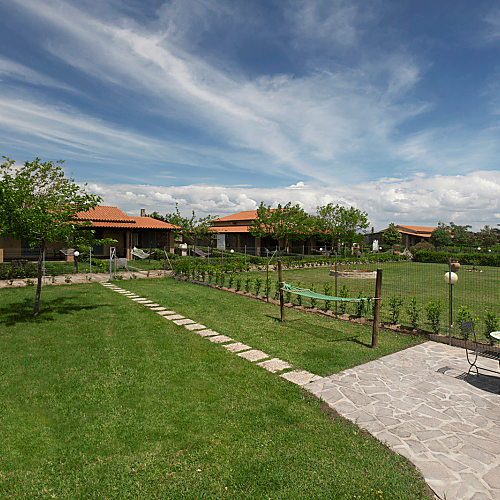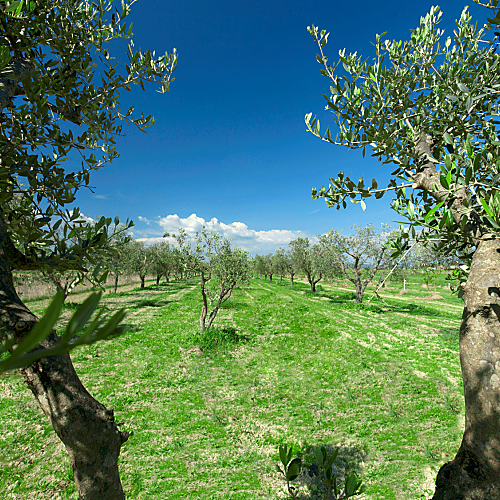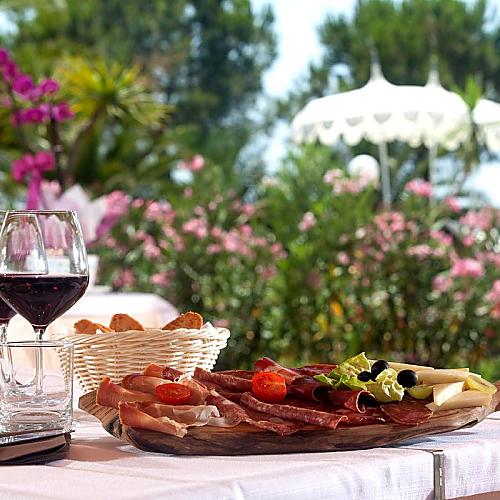
A Mosaic of different Landscapes for your holiday in Tuscany
The Maremma is an exclusive area where a deep sense of respect for nature has always gone in for the skilful man’s work, which has been able to promote the territory, adapting it to modern needs, but at the same time preserving its environmental heritage. In the unique setting of the Maremma, where nature gets along perfectly with a palpable memory of the ancient history, you will discover gorgeous surroundings, seduced by a calm that will allow you to forget the frenzy and chaos of everyday life. Fattoria Maremmana is the perfect place to welcome and satisfy all your needs, shrouded as it is by the magical nature of the Maremma, waiting for you to spend unforgettable days. A holiday at Fattoria Maremmana allows you to enjoy the sea, the charming hidden coves and the vast beaches, as well as to experience the wilderness, breathing its special air. Do not forget that in Maremma, reserves, parks and oases stretch out to 40,000 hectares and are part of an area that stands out for the variety and richness of its natural environments.
The Pinewood Tombolo of Marina di Grosseto
The pinewood Tombolo stretches between the towns of Marina di Grosseto and Castiglione della Pescaia in the south to the north. It is an old pine forest consists of pine trees , which occupies what was once the pillow that separated the lake Prile from Tyrrhenian Sea . Fantastic and relaxing walks, walking, cycling and horse riding and picnic in the picnic areas. Inside is the St. Lawrence channel , called Fiumara , attractive to wildlife species it houses, especially in winter. Particularly noteworthy coast side and host high sand dunes, with a typical vegetation.The immense pine forest has a rectangular shape and is composed mainly of pine trees and the coast by pine trees. The latter are more resistant and thus able to withstand the harsh climatic conditions near the sea, such as high salinity and high temperature. It has a thick undergrowth formed by species of the Mediterranean as the holm oak and the cork. And thanks to the presence of the Mediterranean and the nearby marshes, we find species like the fox, porcupine, common squirrel and badger, who attends above all the area within the area. Another great attraction of the area is that of the dunes that have a vegetation distributed according to factors such as rainfall, sunlight and the wind direction. The strip between the dunes and the first strips of pine forest is covered by shrubs like the rockrose , juniper and perennial herbaceous species. Particularly interesting to visit the dune area in the spring, when the plants bloom present, giving a very special touch of color. Even the Fiumara area has a strong natural interest. Its appearance changes depending on the amount of annual rainfall that determine the size of the strip of sand that separates it from the sea.
Maremma Park
The Maremma Natural Park is one of the first regional parks born in Tuscany and its foundation dates back to 1975. Ben 11 different and well-marked, routes that will make you discover how beautiful nature can be experienced than watched on TV. Points of interest: the Uccellina Mountains , the wetlands of the trap, the plain at the mouth of the Ombrone River , the beaches starting from dell’ Ombrone Bocca up to Cala di Forno . Natural attractions: nature, wildlife and monuments. Possibility of: guided tours, canoe tours, riding tours, night tours, carriage tours, mountain bike tours, birdwatching .The Maremma Natural Park covers around 100 sq km, including insidedifferent natural environments . The interest in this park is represented precisely by the splendid variety of environments present, who are able to show all the main features of the Maremma habitat. Visiting the park you will find wooded hills and the Mediterranean scrub, sandy beaches and cliffs that descend to the sea, and again stretched plains populated by wild horses and the beautiful specimens of Chianina. In the north are the lake environments, such as the area Trap, the perfect place for birdwatching, and observe various birds like the knight of Italy and the stone curlew. The Uccellina mountains , which represent the predominant part of the park, are a chain of hills parallel to the coast covered with Mediterranean vegetation, which culminates with the highest peak which is Poggio Lecci (417 meters). In these hills there are numerous sightings of mammals such as boars, foxes, deer and roe deer. The coastal area is home to beaches for about 20 km, starting from the mouth of the Ombrone to Cala di Forno , where then the Uccellina degrade forming steep cliffs. Inside the park there are also several monuments, the most famous is the ‘ Abbey of San Raban , a complex built in the eleventh century, by the Benedictine monks built here because of the resources in this area. Of great interest is the Towers ancient built during the Middle Ages to defend the area from the incursions of the Saracens. Many have been destroyed, but there are some still visible, like the towers of Castel Marino , Collelungo and Torre Uccellina.
Diaccia Botrona, important wetland for wildlife of Tuscany
The marshes Diaccia Botrona is located between Castiglione della Pescaia and Grosseto near the pinewood Tombolo Diaccia Botrona is a wetland of great historical importance but especially wildlife, thanks to the presence of many species of fauna present. Between Castiglione della Pescaia and Grosseto , near the pine forest and the well known and popular beach, is the Diaccia Botrona , an unknown to most and marshy area that for centuries has played a very important role in the history and evolution of the territory of Maremma . Although much reduced from its original size and besieged towns and crops, it is a piece in the complex mosaic of coastal wetlands, fortunately saved from the process of reclamation. If a long ponds, swamps and marshes evoked a disturbing world, desolate and scarcely productive, today we are slowly learning to evaluate the richness and importance of these rare ecosystems. The spring and autumn is definitely the best for visiting not only the Diaccia Botrona but all wetlands in general. At the beginning of the fall season, we are witnessing the gradual departure of migratory birds and to the passage of those who will support in the area for a few days, and then leave and reach the wintering areas further south. October is one of the prettiest months from the point of view of landscape, as with the rains now and early next winter signals, the marsh vegetation takes on the stunning color tinged red salicornia and purple flowers of Limonium (statice) and Aster. In the winter months the marsh is animated by a multitude of birds, a paradise for ” birdwatchers ” which, equipped with a good pair of binoculars, can observe them in their natural environment while feeding, you toelettano, resting or trying to escape a predator. With the arrival of spring begins the new phase of migration; waders, most of the ducks and egrets give way to other species such as the pink flamingos and the knights of Italy. The marsh echoes everywhere of reed warblers singing, larks and nightingales river, intent to attract a partners or define their own play area. Particular attention needs to make the visitor in this period, in order to not disturb the animals during the critical reproductive stage.
Carapax, European Centre for the Protection of turtles
Carapax is the European Centre for the Protection of turtles and Center for the reintroduction of the White Stork. Carapax is a unique center in Europe that deals with welcome, study and reintroduce naturally the many species of turtles. Visiting the center in fact you’ll meet turtles Italian and foreign, land and sea , but especially turtles giants and tiny . Of particular interest in the exotic area where the turtles Snapping turtles alligators and turtles Amazon red-legged. The Carapax is also a stork center with the largest aviary in Italy. You can observe the storks up close and see the nuptial parades, the nest building and small.
Wwf Oasis Lagoon Of Orbetello
The oasis of Orbetello Lagoon is located along the Tuscan Tyrrhenian coast, in the town of Orbetello. It is about 26 km from Fattoria Maremmana. The oasis of Orbetello Lagoon covers 850 hectares and is managed directly by the WWF. It is a wetland of great importance as a refuge for thousands of birds and mammals. The oasis is made up of 300 hectares of brackish lagoon with whether outcropping lands covered by the marsh vegetation. The oasis of the Lagoon of protecting a wetland of great interest for its position is able to give shelter to thousands of species of migratory birds. In his ponds are inhabitants as flamingos, the white knight of Italy, herons increased, herons, osprey and even spoonbills, spoonbills and avocets … In his made Mediterranean vegetation, walking undisturbed foxes, badgers and porcupines, chase and hide among the plants of mastic tree, mock privet, myrtle and arbutus. the visit to the wetlands of Oasis of the Lagoon goes through 3 different routes. The first, the classic and best-equipped, allows bird watching through a route with 9 stations. The second path is to discover the Patanella Bosco characterized by large expanses of heather, which was set up a botanical path and where there are huts for observation; the third is that of Casale Giannella where the Environmental Education Center consists of a Spanish farmhouse of 1600 which houses an exhibition on wetlands and the butterfly garden. For all lovers of the outdoors and nature , Oasis will give an unforgettable experience full of charm and fascination.
The Tarot Garden
A walk and a life experience, through an artistic and existential journey that speaks to us of joy and happiness, and of pain and death, filling our eyes with colors and images.
This is the Tarot Garden, located in Garavicchio (Capalbio) in the lower Maremma. Created by the painter, sculptor, and filmmaker Niki de Saint Phalle (1930-2002), one of the most popular artists of the mid-20th century. A French naturalized American who created an open-air imaginary universe and, realizing her baroque dream, sculpted a fairy tale for adults and an enchanted garden that winks at Antoni Gaudí's Parque Güell in Barcelona and the Bomarzo garden in Viterbo.
The exotic garden, created starting in 1979 and opened to the public on May 15, 1998, contains twenty-two imposing figures inspired by the major arcana of the Tarot, built in reinforced concrete and covered with a mosaic of mirrors, glass, and colored ceramics.
The Tarot Garden stands on the southern slope of the Garavicchio hill in the Tuscan Maremma. The work, spread over about 2 hectares of land, constitutes a real "city" where the sculpture-houses mark the stages of the journey, standing out in bright colors from the road in the wild natural landscape. At the foot of the Garavicchio hill, access to the Garden is literally barred by the long wall of the entrance pavilion created by Mario Botta, consisting of a double tuff enclosure wall with a single large circular opening in the center, closed by a gate. Botta himself declared that in designing the entrance, he tried to interpret the feeling of "separation" between the Garden and the outside world that Niki de Saint Phalle requested: the wall is thus intended as a "threshold" to be crossed to enter a "magical pause" clearly divided from everyday reality.
Crossing the threshold, the dirt road climbs up to the large central square occupied by a basin and dominated by the united figures of the High Priestess and the Magician, the first major arcana of the Tarot marking the beginning of the journey. Surrounded by greenery and the sinuous benches of Pierre Marie Le Jeune, the square, a sort of large amphitheater overlooked by the other colorful sculptures, immediately communicates that impression of restlessness and enchantment, of fascination, play, and splendid visionary quality that animates the entire Garden. The circular basin, into which the waters flowing from the staircase that proceeds from the enormous open mouth of the High Priestess cascade, is a clear reminiscence of the Orcus of Bomarzo and an ideal link with the water games of Villa d'Este. In the center is the Wheel of Fortune, the self-moving mechanical sculpture executed by Jean Tinguely. The roads branching off from the square follow different routes that trace the undulations of the terrain, climbing or descending along the slope. The roads also play a fundamental role in the work: on the concrete covering them, Niki de Saint Phalle indelibly engraved thoughts, memories, numbers, quotes, drawings, messages of hope and faith, unfolding a path that is once again not only physical but above all spiritual. On the right slope, the small staircase ascending from the square passes under the figure of the Sun, embodied in the great bird of fire, white, red, and yellow, perched on a large blue arch, clearly recalling the iconography of Native Americans. Immediately after the Sun, here is the Pope, Tinguely's favorite work.
The artist even created and lived in a house of mirrors complete with rooms.
The cost of a full ticket is 12 euros, and the opening months are from April to October, while in the months when it is closed, from November to March, it is open only on the first Saturday of each month from 09:00 to 13:00, and admission is free.























